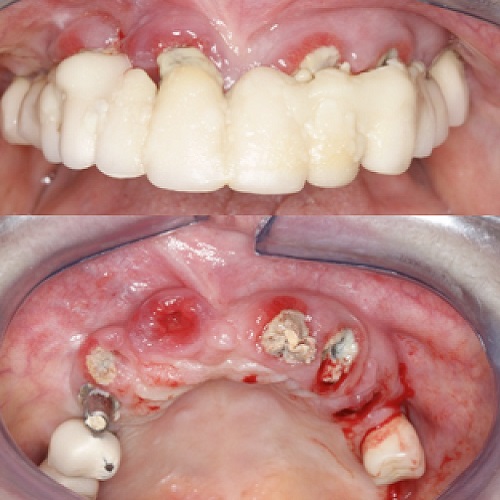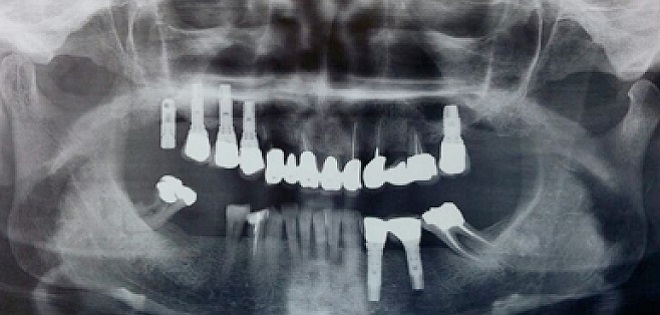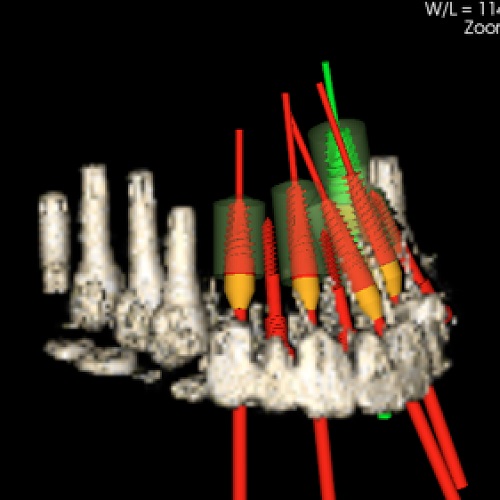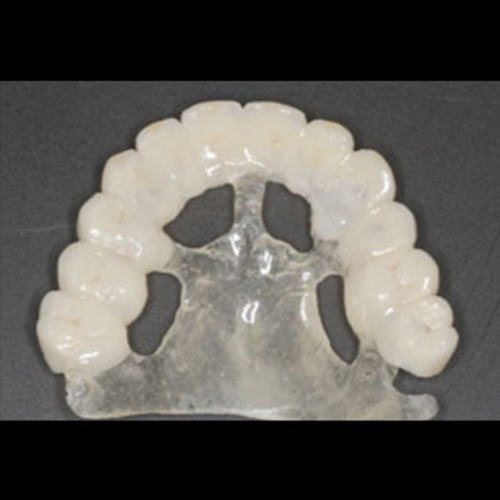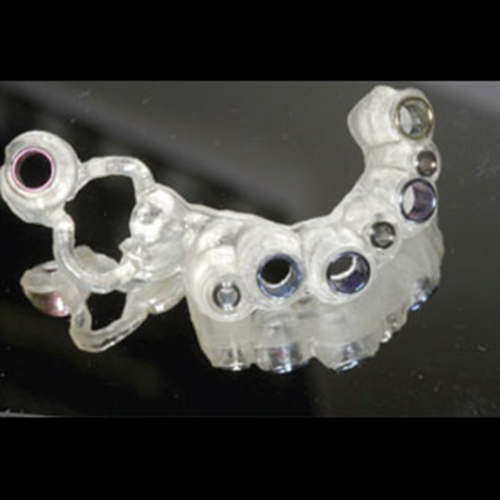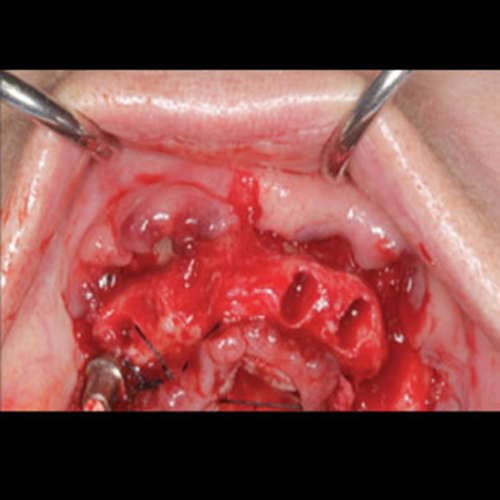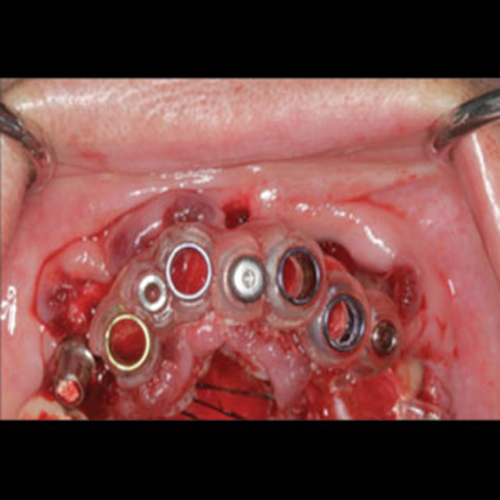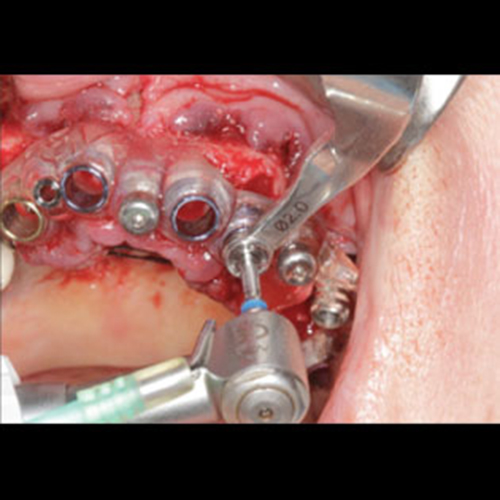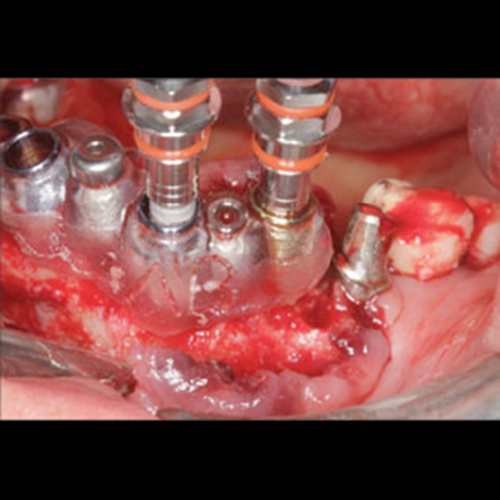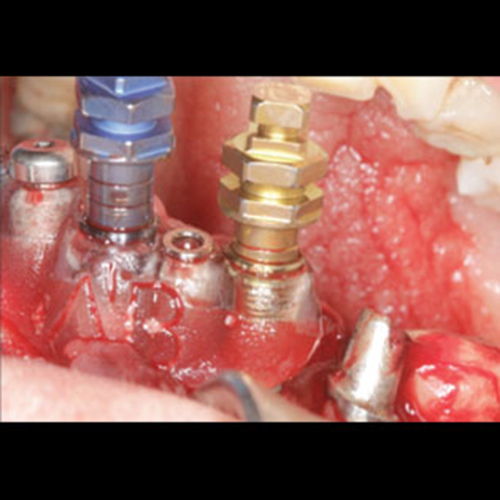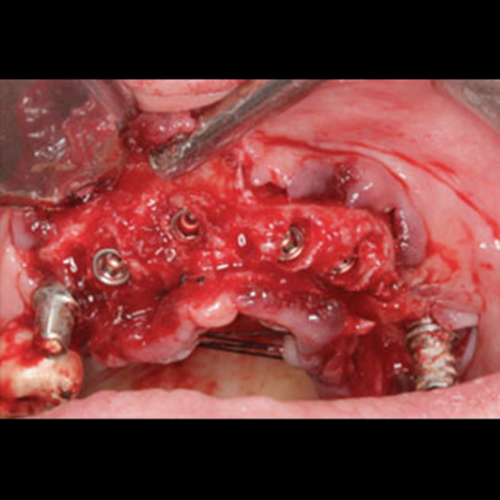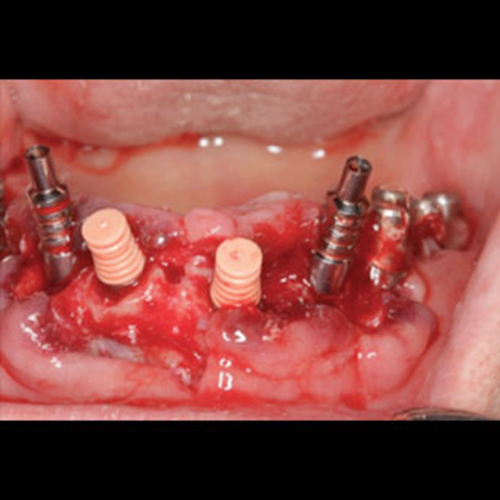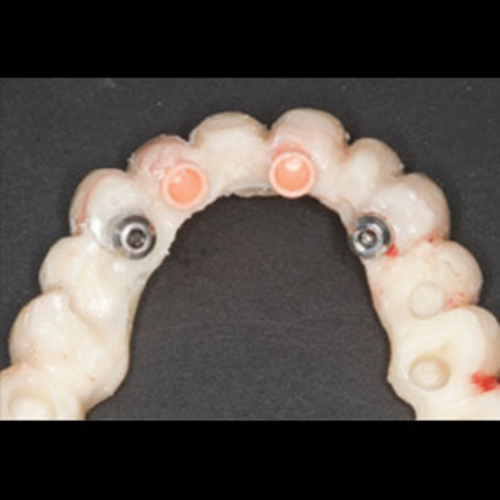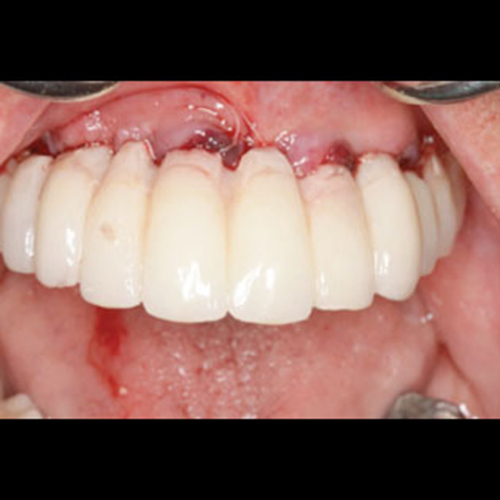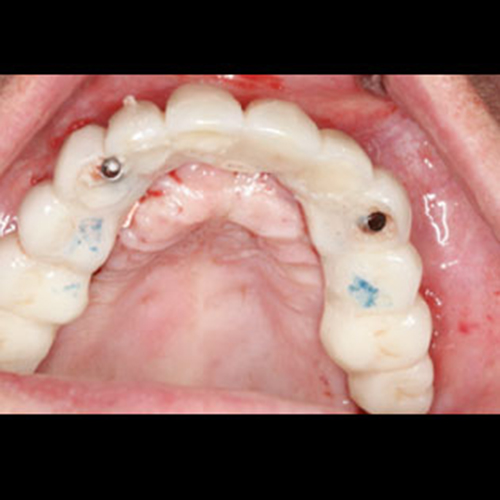Computerized planning of implant-supported rehabilitation and implant insertion with bone-supported splint using ABGuidedService software, as demonstrated in this patient, allowed precise positioning of the implants with full synchronization between bone structure and patient’s existing teeth.
Bone-supported surgical splint resting passively and accurately on top of bone tissue allowed drilling and implant insertion according to the location, angle and depth established during the planning stage.
Temporary acrylic partial dentures, previously planned according to the intended implant location and attached to implants after their insertion into the bone with temporary structures (immediate loading), allowed the patient to regain full oral functioning.
